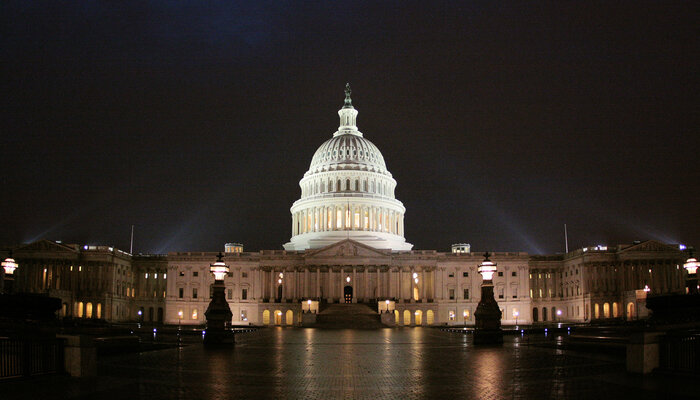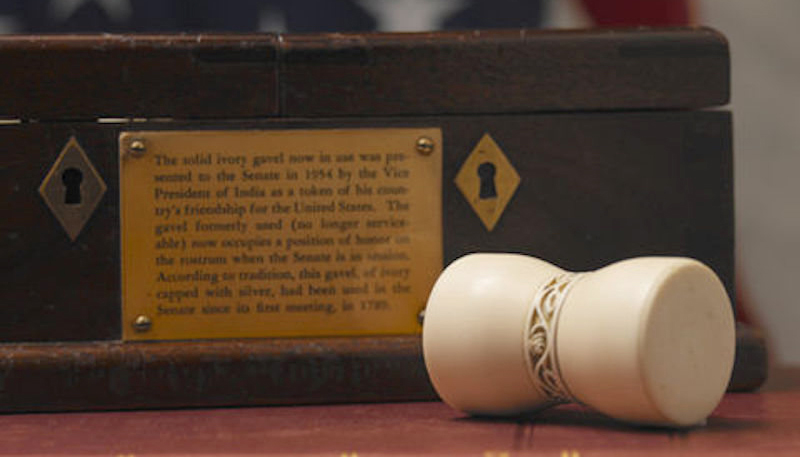Traditionally, the Senate filibuster was reserved for only the most controversial issues, but its use has escalated in recent years, often slowing business in the chamber to a halt. Some lawmakers acknowledge that the filibuster, which has effectively set a 60-vote supermajority requirement for passing legislation in the Senate, could doom many of the proposals they have championed, including meaningful reforms on issues ranging from health care to climate change to gun control. Behind this dysfunction, the filibuster also has a troubling legacy: it has often been used to block civil rights legislation intended to combat racial discrimination.
As advocates push for pro-democracy legislation, calls for eliminating the filibuster have grown louder. In his remarks at the funeral of civil rights hero and congressman John Lewis in July 2020, former President Barack Obama called the filibuster a “Jim Crow relic,” arguing that the procedure should be eliminated if it is used to block voting reforms. Others note that certain types of legislation are already exempt from the filibuster’s supermajority requirement and argue that a similar exemption should be made for voting rights.
The stakes were raised in March 2021, when the For the People Act — a comprehensive democracy reform bill — was passed by the House of Representatives and introduced in the Senate, where the filibuster may determine its fate. Whether through elimination or reform, the filibuster cannot be allowed to impede the expansion of American democracy or the rights of all eligible voters.
What is a filibuster?
In the Senate, a filibuster is an attempt to delay or block a vote on a piece of legislation or a confirmation. To understand the filibuster, it’s necessary first to consider how the Senate passes a bill. When a senator or a group of senators introduces a new bill, it goes to the appropriate committee for discussion, hearings, and amendments. If a majority of that committee votes in favor, the bill moves to the Senate floor for debate.
Once a bill gets to a vote on the Senate floor, it requires a simple majority of 51 votes to pass after debate has ended. But there’s a catch: before it can get to a vote, it actually takes 60 votes to cut off debate, which is why a 60-vote supermajority is now considered the de facto minimum for passing legislation in the Senate.
What’s the history of the filibuster and its supermajority requirement?
Under original Senate rules, cutting off debate required a motion that passed with a simple majority. But in 1806, after Vice President Aaron Burr argued that the rule was redundant, the Senate stopped using the motion.
This change inadvertently gave senators the right to unlimited debate, meaning that they could indefinitely delay a bill without supermajority support from ever getting to a vote. This tactic is what we now know as a filibuster.
In 1917, the Senate passed Rule XXII, or the cloture rule, which made it possible to break a filibuster with a two-thirds majority. In 1975, the Senate reduced the requirement to 60 votes, which has effectively become the minimum needed to pass a law.
There are, however, exceptions to the filibuster rule. Perhaps the most notable recent example pertains to presidential appointments. In 2013, Democrats changed the Senate rules to enable the confirmation of executive branch positions — including the cabinet — and of non–Supreme Court judicial nominees with a simple majority. Four years later, Senate Republicans expanded the change to include Supreme Court appointments. Both changes invoked what is known as the nuclear option, or an override of a rule to overcome obstruction by the minority.
At times, the Senate has also exempted certain types of legislation from the cloture rule. For example, Congress’s annual budget reconciliation process requires only a simple majority vote and cannot be filibustered. Likewise, trade agreements that are negotiated using fast-track rules cannot be filibustered. Other exemptions apply to measures that involve, for example, military base closures or arms sales. In total, 161 exceptions to the filibuster’s supermajority requirement have been created between 1969 and 2014, according to an analysis by the Brookings Institution’s Molly Reynolds.
What’s the difference between “talking” and “silent” filibusters?
Filibusters traditionally involved long speeches in which a senator attempted to block a vote from proceeding by refusing to yield the floor. To stage such a “talking” filibuster, a senator would hold the floor by standing and talking for as long as they could, sometimes overnight. This was popularized in the 1939 film Mr. Smith Goes to Washington. The longest filibuster ever recorded, by South Carolina Sen. Strom Thurmond in opposition to the Civil Rights Act of 1957, lasted for more than 24 hours.
But since the early 1970s, senators have been able to use a “silent” filibuster. Anytime a group of 41 or more senators simply threatens a filibuster, the Senate majority leader can refuse to call a vote.
How has the filibuster been used to block civil rights progress?
Critics of the filibuster have pointed to its racist history — including its early uses in the 19th century by pro-slavery senators including John C. Calhoun of South Carolina, who used it to protect the interests of Southern white landowners who depended on slave labor.
The enactment of Rule XXII in 1917 gave rise to the modern filibuster, which has also been used to block civil rights legislation, especially during the Jim Crow era. In fact, this was one of the primary uses of the filibuster during the 20th century. According to a study conducted by political scientists Sarah Binder and Steven Smith, of the 30 measures that were derailed by the filibuster between 1917 and 1994, exactly half of them involved civil rights. Filibusters blocked measures such as anti-lynching bills proposed in 1922 and 1935; the Civil Rights Act of 1957; and legislation that would have prohibited poll taxes and outlawed discrimination in employment, housing, and voting.
How has the filibuster changed over time?
The use of the filibuster, once reserved for only the most controversial issues, has increased dramatically in recent years alongside growing polarization in Washington. There have been more than 2,000 filibusters since 1917; about half have been in just the last 12 years. Critics argue that this increased use has slowed business in the Senate to a halt, often entangling the chamber in procedural maneuvering instead of substantive debate and, ultimately, lawmaking.
What has been the impact of increasing filibuster use?
The ongoing deadlock on certain issues has led to the use of the budget reconciliation rules to bypass the chamber’s procedural hurdles. Designed to expedite Congress’s budget process, reconciliation bills can pass with only 51 votes, compared to the de facto 60-vote requirement imposed by the filibuster. However, the budget reconciliation process is limited in scope, and analysts argue that it was not designed to handle the sweeping scale of legislation that marks its current use.
Critics of the modern filibuster have argued that the maneuver undermines the Senate as a governing body and its reputation as a consensus-building chamber. The mere threat of a filibuster silences debate and removes incentives to work toward compromise.
Overuse of the filibuster magnifies problems of representation endemic to the Senate, where small and large states alike are each represented by two senators. However, the population disparity between the largest and smallest states has increased significantly since the founding. Today, the 26 least populous states are home to just 17 percent of the U.S population. This means that a group of senators representing a small minority of the country can use the filibuster to prevent the passage of bills with broad public support.
Filibuster abuse also threatens checks and balances between the branches of government. The relative stagnancy of Congress — which is in large part due to the filibuster — has pushed presidents to increase their use of executive power, which in turn often goes unchecked because of Congress’s inability to act.
Some legal scholars argue that the filibuster may not even be constitutional, citing Article I, Section 5, which states that “a majority of each House shall constitute a quorum to do business.”
What options are available for filibuster reform?
As Senate gridlock persists, calls for eliminating the filibuster altogether have grown louder, especially given its historical complicity in perpetuating Jim Crow laws and thwarting civil rights legislation and voting reforms. Changing the Senate rules — particularly, Rule XXII — would be the most straightforward way to eliminate the filibuster, although such a change would require a two-thirds supermajority. The nuclear option is another way to eliminate the filibuster. Under this method, the Senate majority leader would use a nondebatable motion to bring a bill for a vote and then raise a point of order that cloture can be invoked with a simple majority.
Some advocates argue that voting rights legislation warrants an exemption from the filibuster, even if the procedure is not eliminated altogether. Stacey Abrams, the voting rights champion and former minority leader in the Georgia House of Representatives, has called on senators to lift the filibuster for election reform legislation such as the For the People Act. “Protection of democracy is so fundamental that it should be exempt from the filibuster rules,” she said, noting that the filibuster has already been suspended for judicial and cabinet appointments, among other measures.








